Last Updated on January 8, 2024
An induction cooktop is a great way to replace your gas stove and benefit the environment, all in one appliance. What is an induction cooktop? Learn all about the best induction cooktop, why I recommend them, and why they’re better for the environment.
Why choose an induction cooktop vs electric? What is an induction cooktop? Why are they better for the environment (and your health)? I have literally everything you need to know about this appliance and why it should be on your list of home upgrades to make! Read on to learn why I decided to make the switch to an induction cooktop in my own home.
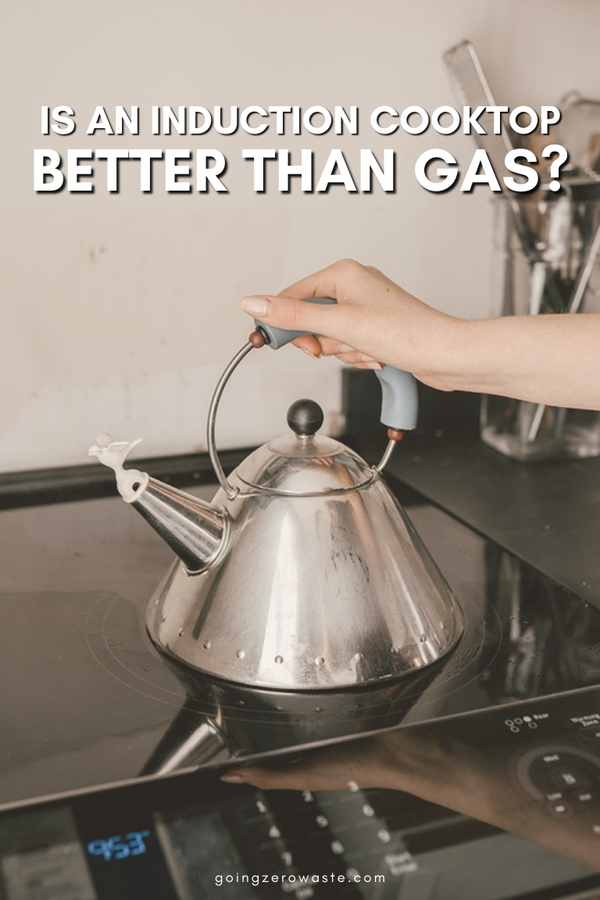
This post was sponsored by GE Appliances. All thoughts and opinions are my own; for more information please see my disclosure policy.
Table of Contents
the problem with gas stoves
There’s something primal about lighting a stovetop and cooking over the open fire of a gas stove. But cooking with gas has been shown to be harmful to the environment, emitting greenhouse gases into the atmosphere.
Worse yet, a recent study found that 75 percent of oven emissions occur when the stove is off. In other words, gas stoves old and new are constantly emitting methane.
Methane is the main component in natural gas and more than 40 million homes cook with gas stoves in the United States. This has a climate impact comparable to adding half a million gas-powered cars to the roads.
Gas stoves also contribute to indoor air pollution and are terrible for our health. That’s why I’ve decided to ditch gas and switched to induction cooktops instead. Here’s why you should too.
what is an induction cooktop?
An induction cooktop is a type of electric stove that uses electromagnetism to heat up your cookware and essentially turn your pot or pan into its own heat source. As you can imagine, this is much more efficient than heating up a large surface to slowly heat the pot or pan sitting on top of it.
They require less energy for cooking and less electricity to run than traditional electric or even gas stoves. Plus, they mitigate the safety issues that come with having a live gas line in your kitchen. And, of course, eliminates the health hazards of methane slowly dripping into your home.
are induction cooktops worth it?
Yes, induction cooktops are worth it because gas (methane) stoves insufficiently heat the surrounding air.
Using a thermal camera, the zero waste chef showed the difference between methane vs induction cooking: Induction cooking only heats the pot, not the surrounding air. With methane cooking, the heat shoots up the sides of the pot.
Plus, with induction cooktops, the size of the pot doesn’t matter. It will only heat the pot, regardless of whether it is small or large. That also means extra efficiency which translates into heating your pans and pots in no time and cooking your food faster.
Also, induction cooking is much better for your health. Gas stoves can cause indoor nitrogen dioxide levels to spike quickly, reaching hazardous levels in the amount of time it takes to bake a cake.
This is especially harmful to children who live in a home with a gas stove, as the increased risk of developing asthma is on par with living in a home with a smoker.
Induction cooktops instead use the above-mentioned electromagnets to efficiently heat cookware without pollution or toxic fumes. And, if your home is running on renewable energy, you won’t be burning additional coal or methane to power this device.
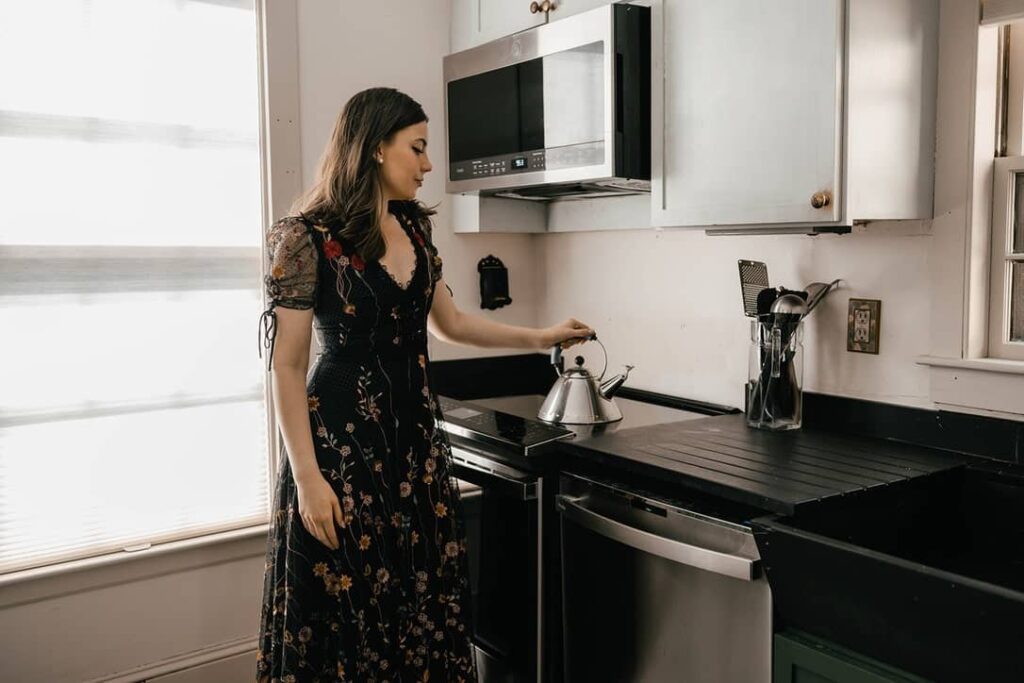
are gas stoves bad for you?
Natural gas stoves (aka methane stoves) release nitrogen dioxide when the stove is lit, which is a toxic byproduct. While increasing airflow by using a range hood can help reduce the health risks of this, most people don’t use ventilation systems.
In a small kitchen, it only took a few minutes of unventilated stove use to create emission levels above national health standards. And, children are most at risk.
Children living in homes with gas stoves are 42 percent more likely to experience symptoms associated with asthma while 24 percent are likely to be diagnosed with lifetime asthma.
Children are more susceptible to health conditions associated with air pollution because they have higher breathing rates and greater levels of activity. Plus, they have immature respiratory and immune systems.
how long do induction stoves last?
The lifespan of an induction cooktop is typically measured in operating hours rather than years. Typically, models designed for domestic use will last for 2500 hours, which is equivalent to 10 hours a day for about a year.
This number of hours doesn’t mean the oven will stop working at 2500 hours, it simply means you will see a decrease in performance as time goes on. The good news is that induction stoves have fewer parts, so they’re less likely to break or need parts repaired.
When you’re shopping for an induction cooktop, be sure to ask about the expected hours and the lifespan of the cooktop unit, along with the warranty.
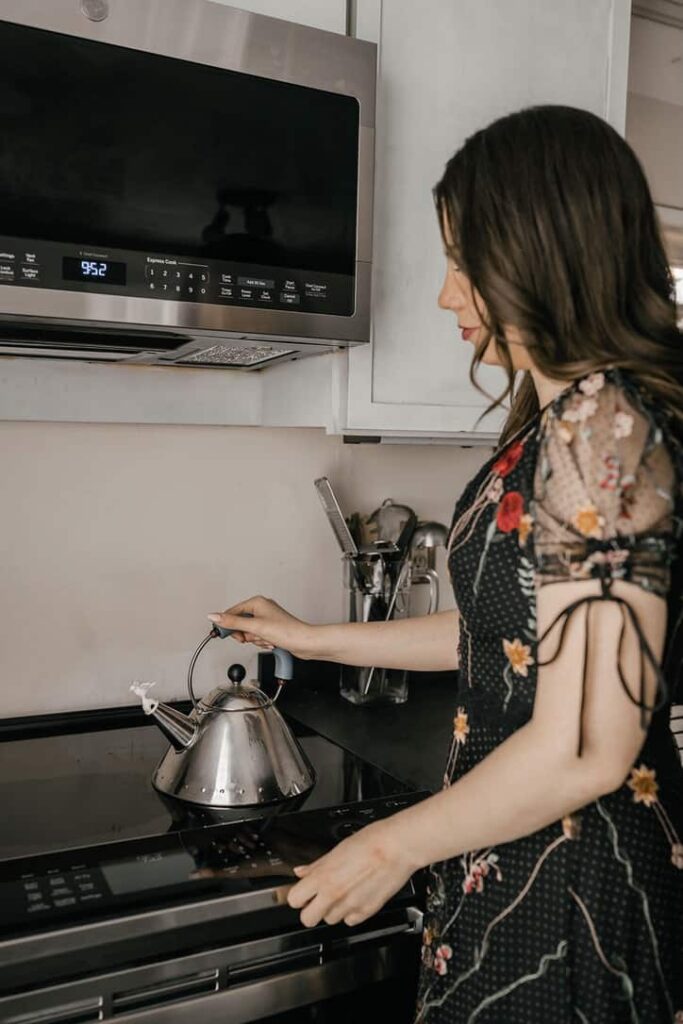
induction cooktop vs electric
So, do induction cooktops use more electricity than an electric stove? Nope — induction cooktops do not use more electricity than their electric stove counterparts. In fact, when comparing an induction cooktop vs electric stovetops, induction stoves are far more energy-efficient than either electric or gas stoves. With induction cooking, 85-90% of the heat energy generated is used for cooking.
In comparison to gas or electric cooktops, only 64-70% of the heat is used for actual cooking. This means induction cooktops are the more energy-efficient choice.
what is the best induction cooktop?
In my opinion, the best induction cooktop to buy is the GE Profile 30”. This is the model I’m using to replace my gas stove, and I’m in love with the features.
It comes with an 11-inch induction element that is powerful enough to boil water in 101 seconds, yet precise enough for delicate dishes. Plus, the smooth induction cooktop surface makes for super easy cleanup.
The reason I’m going with a GE Appliance is because they take responsibility for their products by offering appliance recycling. They’re also a part of the EPA’s Wastewise Program and the EPA’s Smartway Program.
The Wastewise Program is a voluntary initiative focused on waste reduction and saving environmental resources while reducing emissions. The Smartway Program ensures GE Appliances is committed to more sustainable transportation when moving appliances from manufacturing operations to retailers and consumers.
The GE Profile 30” is also ADA compliant and made in America with 70 to 90 percent US content.
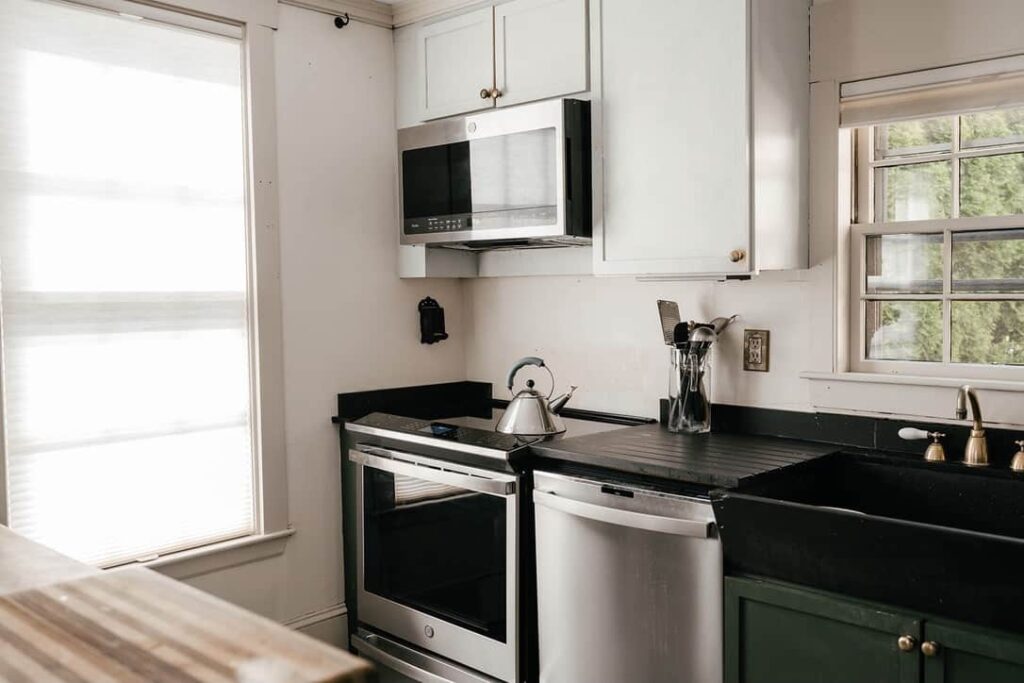
ge profile 30” features:
- Built-In WiFi, Powered by SmartHQ App: Connect, control, and manage the oven from anywhere with a smartphone or tablet.
- Fingerprint-resistant stainless steel: Easily wipe away smudges and fingerprints.
- Sous vide capability: A sous vide-enabled cooktop allows for precision cooking.
- Guided cooking: This range has video-guided recipes from chefs with automatic time, temperature and cooking pace adjustments.
- Intuitive touch controls: Control the cooktop with the swipe of a finger.
- Synchronized elements, clocks, and lights: Control two cooktop elements with a single button to create a bigger cooking surface for griddles.
- Never scrub oven racks: Durable oven racks can be left in the oven during the self-clean cycle.
- Fast preheat: Cut down on preheat time with a speedy preheat feature.
- Fit guarantee: Will fit your existing 30″ cut-out, or GE Appliances will help pay for modifications up to $300.
- GE Profile connect+: Oven will always have the latest features, like new Air Fry modes, with downloadable software upgrades.
are induction cookers loud?
Induction cookers aren’t the quietest form of cooking, but they’re not the loudest either.
Zero Waste Chef, aka Anne-Marie Bonneau, ran a test to measure the decibels (sound intensity) of an induction cooker vs. gas stove hood’s fan. The induction cooker came in at about 61 to 62, whereas the hood’s fan was 64. The decibel scale is logarithmic, which means the increase in sound intensity grows exponentially.
In other words, induction cooktops aren’t as loud as a hood’s fan, which gas stoves make necessary to turn on.
It’s important to note that if you cook with gas, you should always turn on the hood’s fan as well to help aerate the area. Gas stoves release pollutants into your home such as carbon monoxide, formaldehyde, nitrogen oxides, and particulate matter which can cause respiratory and cardiovascular issues.
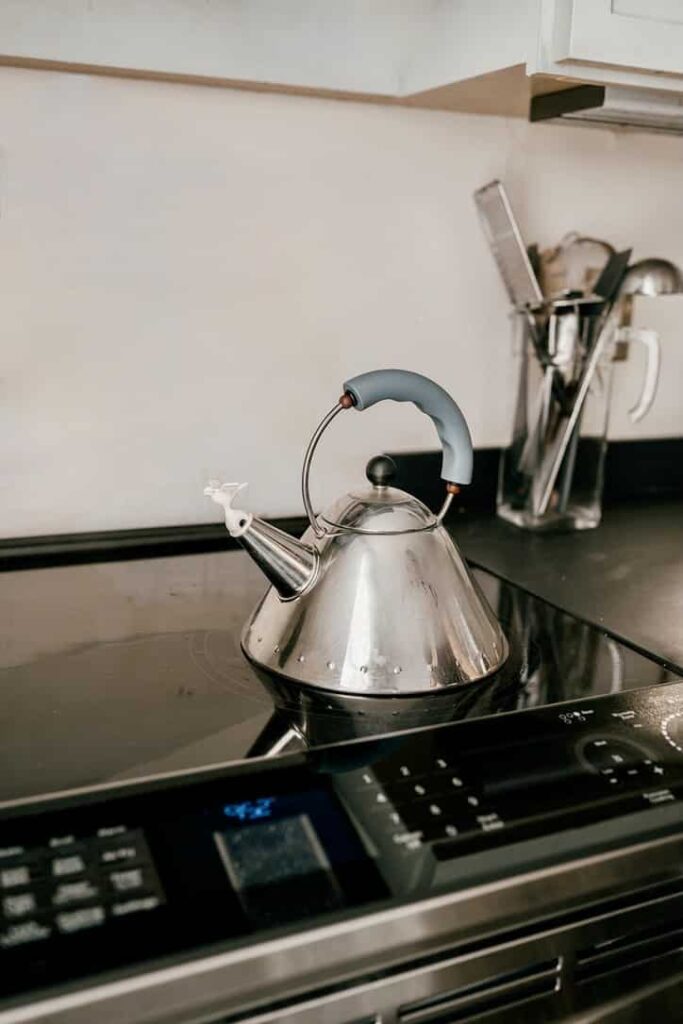
what are the pros and cons of an induction cooktop?
There are several pros and cons that come with induction cooktops, but I’d argue there are more pros overall.
pros:
- Surface of an induction cooktop is cool to the touch.
- Induction cooking is faster and more precise.
- Ultimate temperature control.
- The most energy efficient cooktop.
- No pollution or toxic fumes created.
Overall, induction cooking is definitely the most sustainable option. It emits no greenhouse gases, nor does it expose you to any toxic fumes. It’s also the most energy-efficient and chefs love it for its precision and fastness of cooking.
cons:
- Not the most economical (it’s costly upfront).
- You need to be careful about leaving it on (can be difficult to see if it’s on).
- Requires induction-ready cookware (cast iron, steel, some types of stainless steel).
The biggest con is definitely the price tag — and the fact that getting an induction cooktop may not be accessible to you. For example, if you rent an apartment, it would be very hard to switch to an induction cooktop without working out a deal with your landlord.
It’s also important to realize when the oven is on and off. It’s not as clear-cut and easy to see as a gas stove, so you’ll want to be mindful of this.
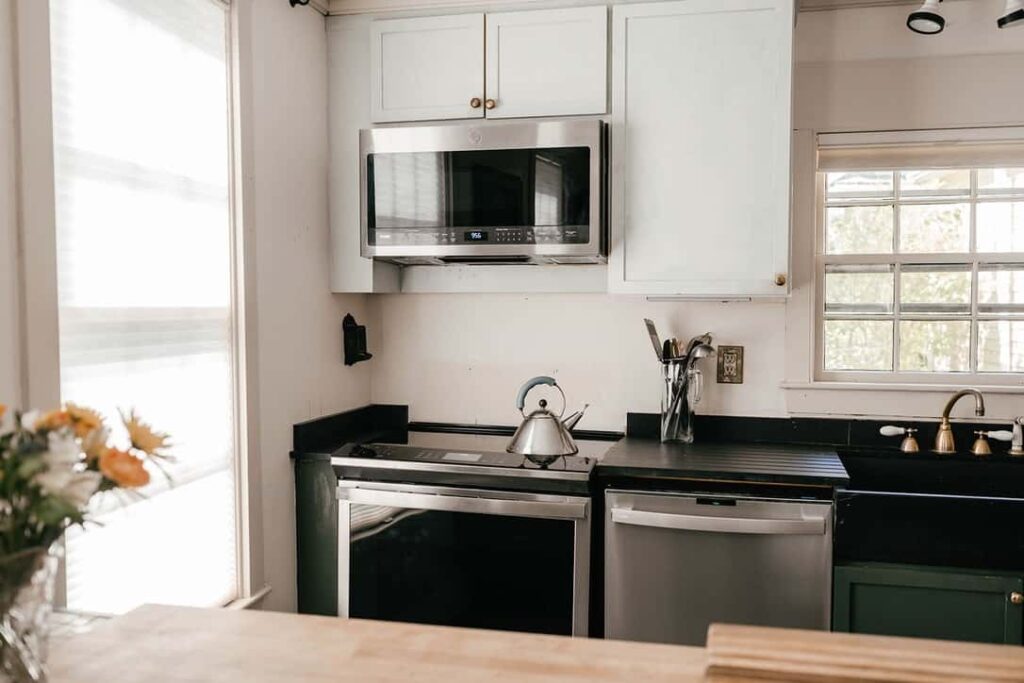
faqs
can you replace gas stove with induction?
You definitely can replace a gas stove with induction cooktops. If you’re making the switch, this will need to be installed by an electrician. When you purchase directly from GE Appliances, their authorized agents will deliver and install your appliance quickly and safely.
GE Appliances also covers replacing an existing appliance. They’ll move it to a different location in your home or haul it away for recycling at no additional cost.
are the ovens different in induction appliances?
Nope! The oven in your induction appliance will bake and broil just like any other electric oven. Exact capabilities vary by model (high-end models may feature things like cameras and convection), but for the most part, you can expect the oven to function as any other oven would.
Would you consider making the switch to induction cooktops? Let me know in the comments below!
And, a big thank you to GE Appliance for sponsoring this post. Be sure to check out GE Appliance’s induction cooktop for the best all-around product.









